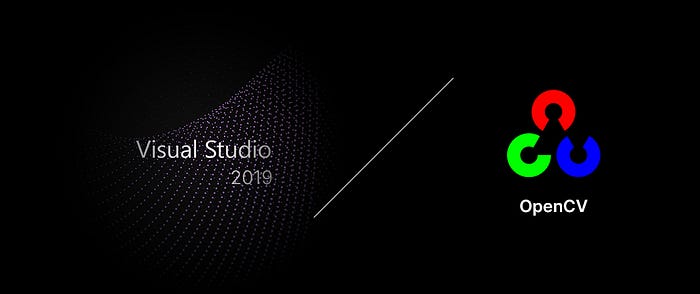Adding OpenCV 4.1.2 to Visual Studio 2019 Project in Windows using Pre-built binaries

Note: This uses an older version (4.1.2) of OpenCV. A newer version (4.2.0) with many new features has been released. Unless you have a very specific reason to stick to version 4.1.2, you should use the 4.2.0 version. Please refer to https://medium.com/@subwaymatch/adding-opencv-4-2-0-to-visual-studio-2019-project-in-windows-using-pre-built-binaries-93a851ed6141 for an updated tutorial on adding the newer version to Visual Studio 2019.
For some reason, the official documentation for OpenCV 4.1.2 has vastly outdated contents on setting up OpenCV for Visual Studio (for C++). So, let’s take a quick dive into how to setup OpenCV 4.1.2 on Visual Studio 2019.
Environment
- Windows 10 (64-bit)
- Visual Studio 2019

Step 1: Download and extract the pre-built library
Download the latest binary from opencv’s Github repository. The latest version as of October 17, 2019 is 4.1.2 (opencv-4.1.2-vc14_vc15.exe). Release files for 4.1.2 are listed at https://github.com/opencv/opencv/releases/tag/4.1.2.

Run the downloaded .exe file to extract the archive.
For the sake of uniformity, this tutorial will assume that you’ve extracted the contents to c:\.


Step 2: Add to path
Add opencv’s bin directory to path.

Step 3: Create a project in Visual Studio 2019
In this step, we’re creating a new project in Visual Studio 2019. Note that the settings we set below are only applied to the new project. If you create a new project, you’ll need to repeat the steps below.


Wait, what if I don’t see the “Console App” option in the previous step?
If you don’t see the “Console App” option in “Create a new project” window, it’s because you haven’t installed the required components for C++ development.
Click on Install more tools and features, and install Desktop development with C++ workload module.


Configure your project and continue. You can name the project however you’d like.


Before we go any further, I want to outline the steps we’re taking and why we are performing each step.
- Set platform target to x64 — Pre-built binaries are built for x64 Windows platforms.
- Add to Include Directories —Tell the compiler how the OpenCV library looks. This is done by providing a path to the header files (
build/include).¹ - Add to Library Directories — Tell the linker where it can find the lib files for different modules.
- Add Additional Dependencies — List
.libfiles for different modules. Note that we’re only going to list a single all-in-one file namedopencv_world.
Let’s move on. First, set platform target to x64.

Now, go to Project → YourProjectName properties in menu.

Once new window opens up, go to VC++ Directories on the left and click on Include Directories row. Once you see the down arrow on the rightmost part of the row, click on the arrow, and select <Edit…>.

In Include Directories window, add c:\opencv\build\include.

Click OK. In the same tab, look for Library Directories. Again, click on the down arrow and select <Edit…>.


The VC++ Directories tab should look like below:

It’s time to list the module dependencies. As mentioned above, we are only going to add a single all-in-one module named opencv_world.


We now should be ready to write some OpenCV code and see it in action.
Step 4: Check out demo code!
Copy and paste the code below and press F5 to run (or click on the Run button with the label “Local Windows Debugger”.


There we go. Have fun with OpenCV.
If you run into any issues, please feel free to let me know.
[1]: OpenCV Documentation. How to build applications with OpenCV inside the “Microsoft Visual Studio”
